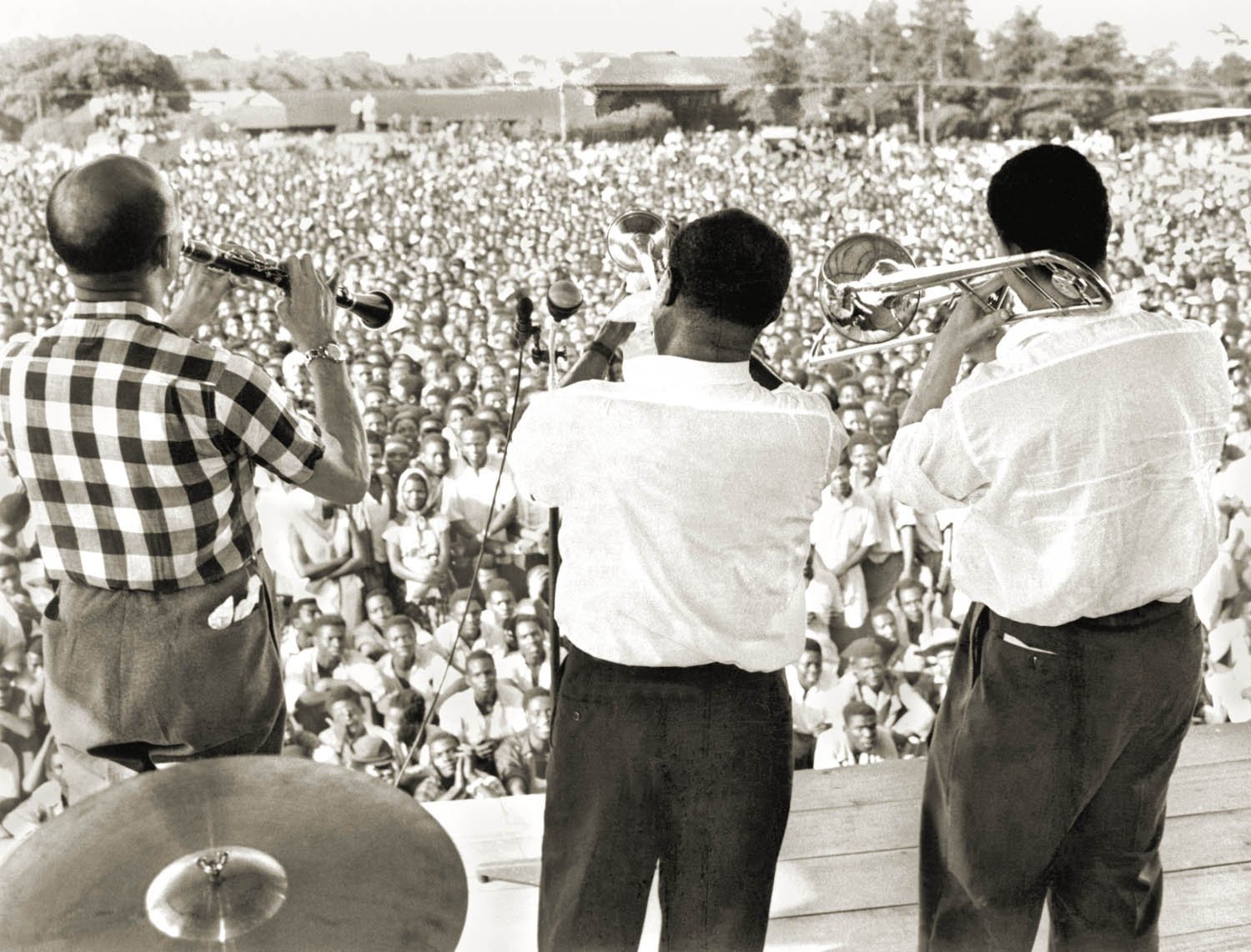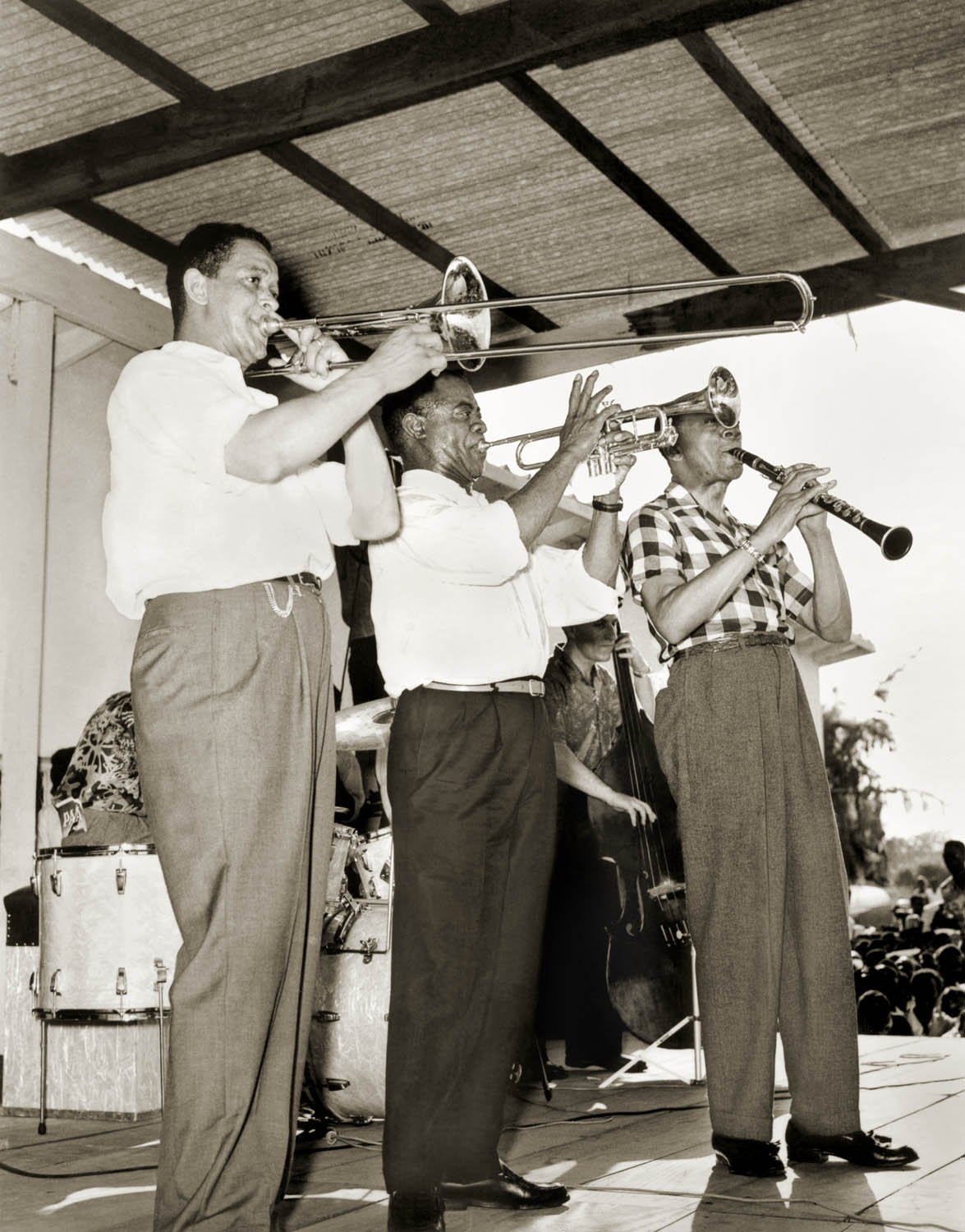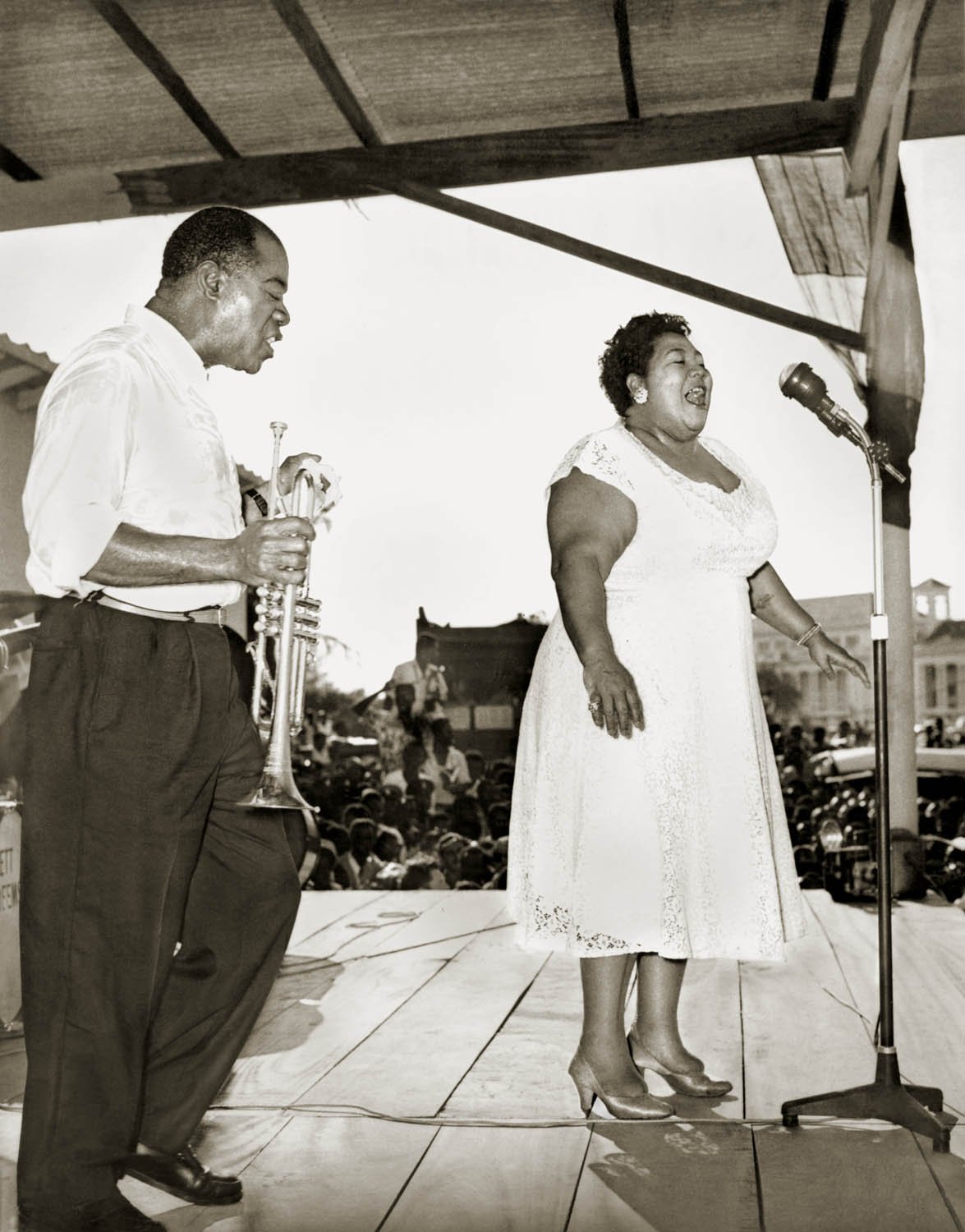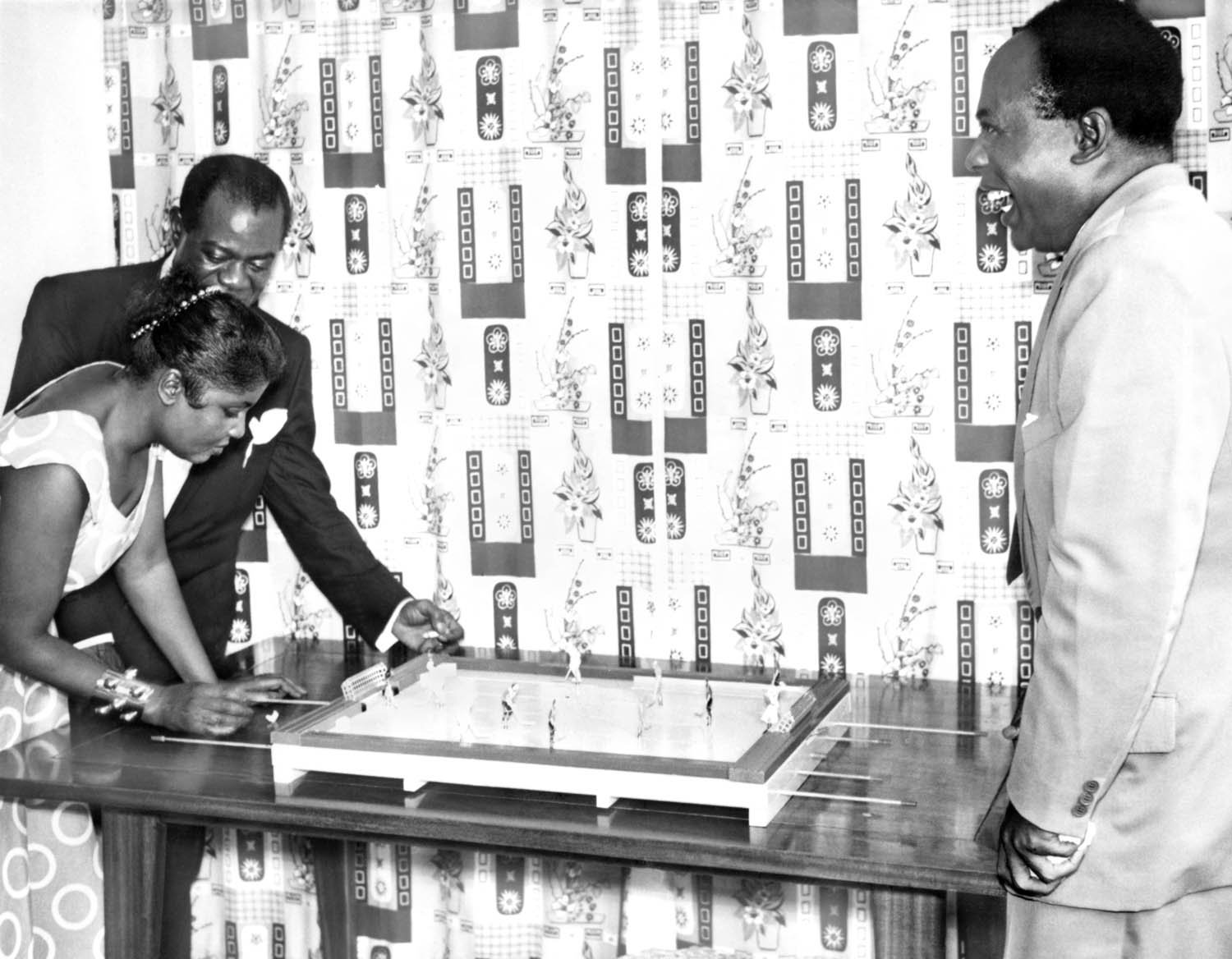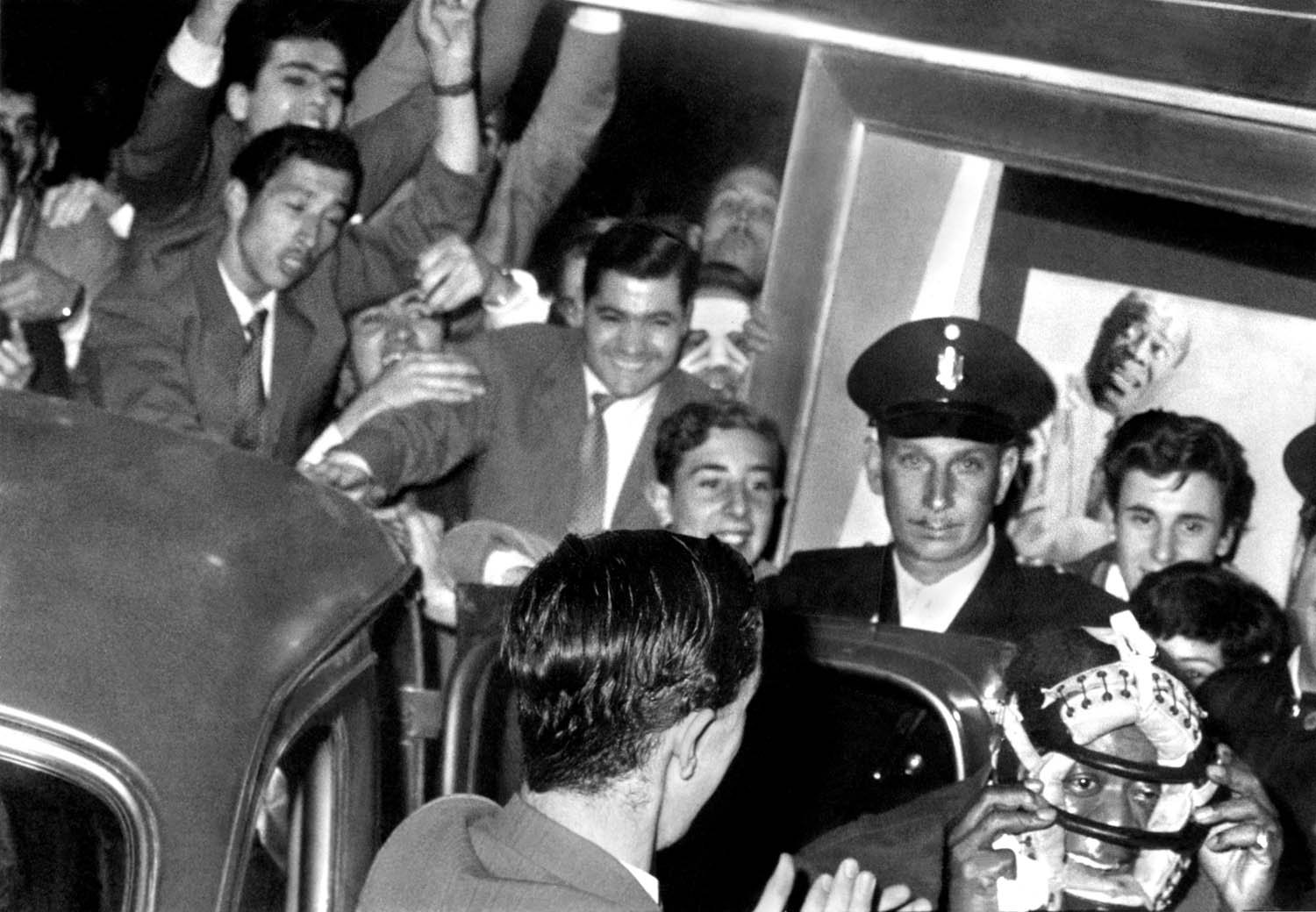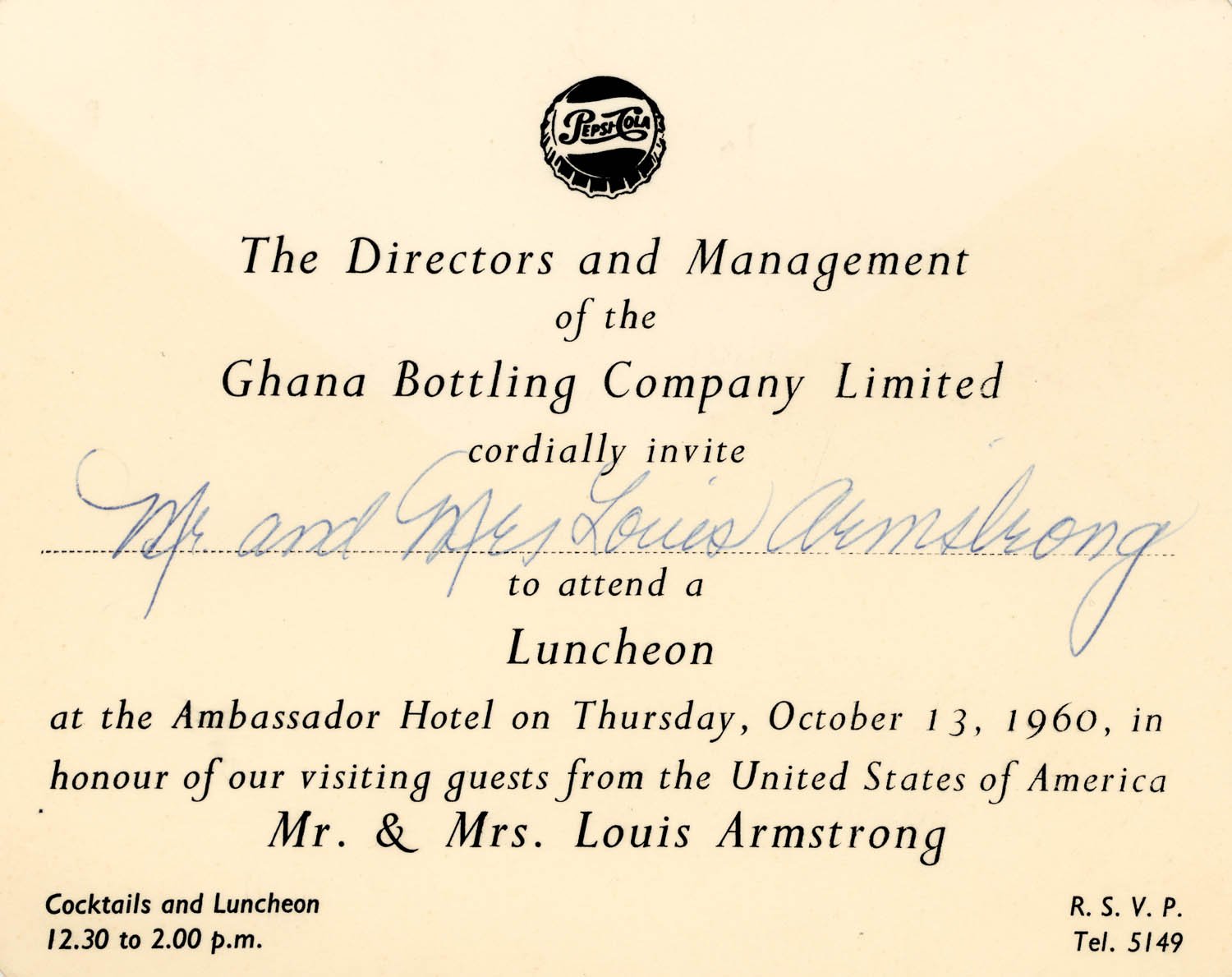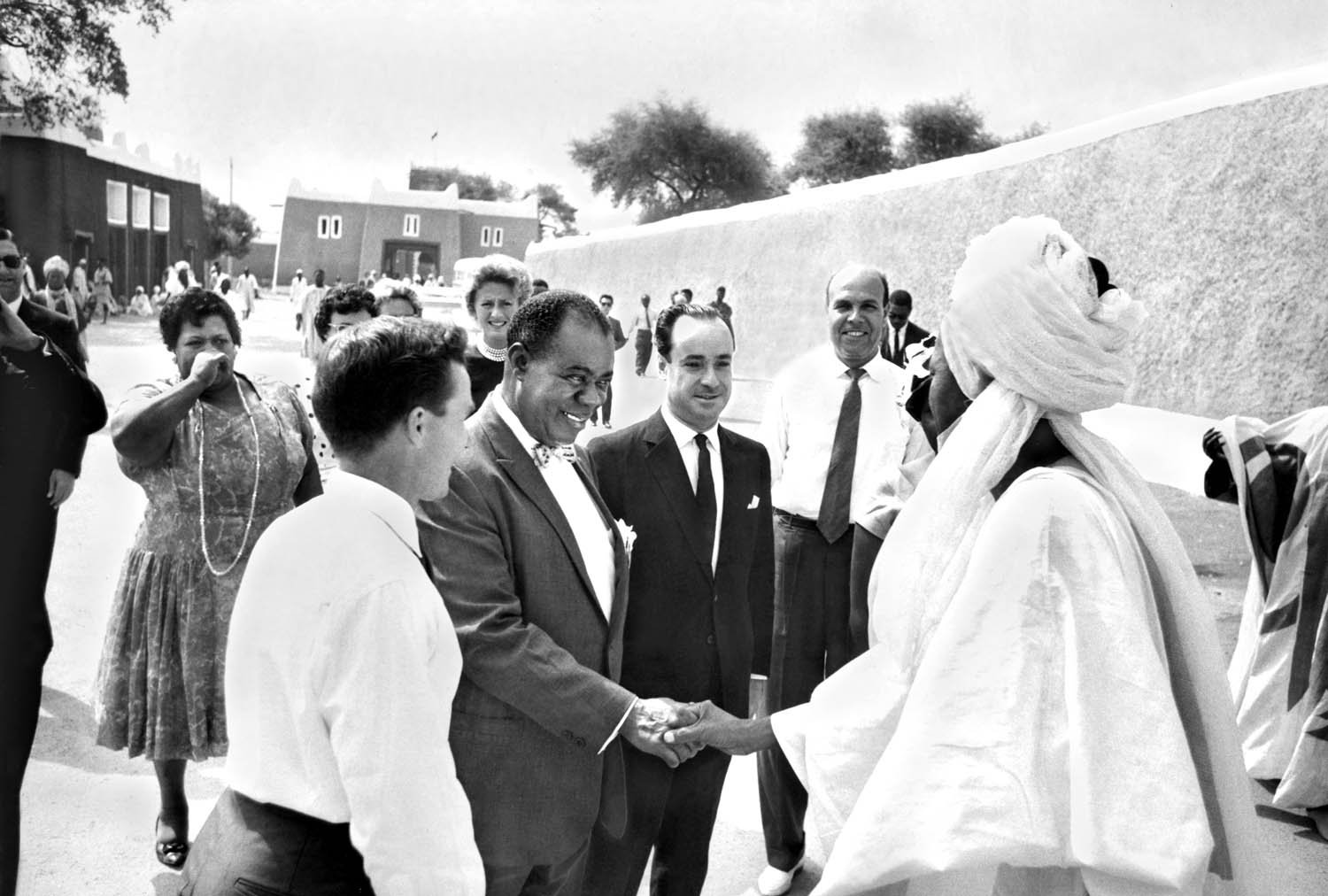Satchmo Blows up the World
Louis Armstrong served in countless ways as America’s premier Jazz Ambassador, beginning with commercial tours to Europe in the 1930s and continuing throughout his life. In November 1955, just three weeks before the approval of the first government-sponsored jazz tour, Felix Belair, the New York Times correspondent in Stockholm, proclaimed that “America’s secret weapon is a blue note in a minor key . . .” and named Louis (Satchmo) Armstrong as “its most effective ambassador.” Given Louis’ skills at connecting with people of all backgrounds and cultures, Columbia Records producer George Avakian coined the sobriquet “Ambassador Satch.” From 1955 onward, wherever Armstrong traveled on official or unofficial trips, he was received as his country’s musical envoy.
Louis and his All Stars band made their first unofficial ambassadorial trip to the British Gold Coast in 1956, soon to become the newly independent nation of Ghana, where they were sponsored by Edward R. Murrow and CBS. When Armstrong was met by thirteen African bands perched atop trucks and playing and singing All For You, Louis, All For You!, he raised his trumpet and joined in. During this visit, Louis and the band thrilled a crowd of several hundred thousand, and were later serenaded by dancers, musicians, and drummers from every region of the country. One of the dancers resembled Armstrong’s mother, who had died twenty years earlier, leading the musician to declare, “I came from here, way back. At least my people did. Now I know this is my country too.” The U.S. consulate in Accra was thrilled by the band’s visit, and in official communiqués referred to the “outpouring of press and public enthusiasm.”
Negotiations were underway for Armstrong to perform in the USSR in 1957, a triumph for the State Department, but he abruptly cancelled these plans when the Little Rock school desegregation crisis went unresolved by the Eisenhower Administration. Satchmo’s candid remarks made front-page headlines – and underscored the value of the jazz tours to American Cold War diplomacy.
In October of 1960 Armstrong and the All Stars embarked on a three-month State Department tour around the African continent. He performed in twenty-seven cities, powerfully conveying his deep sense of connection to African peoples and their shared aspirations for freedom. In Leopoldville, in the Republic of the Congo, Louis was met by drummers and dancers and carried on a throne. The band subsequently appeared in Elisabethville in Katanga Province, leading Satchmo to comment that he had stopped a civil war when a day-long truce was called so both sides could hear them perform. Armstrong visited schools in West Africa and entertained children at a sanatorium in Cairo. The taxing schedule took its toll on the musicians. Singer Velma Middleton suffered a stroke and did not survive the trip. Armstrong was ordered by a physician to take a break because of fatigue, but instead ended up filming Paris Blues in the capital of France. The irrepressible Jazz Ambassador returned to Africa in January of 1961 for the final leg of the trip, which took the All Stars through Senegal, Mali, Sierra Leone, Liberia, Sudan, and the United Arab Republic.
